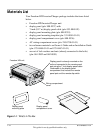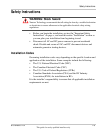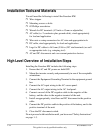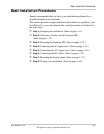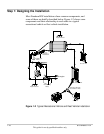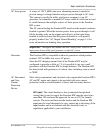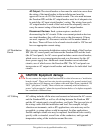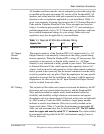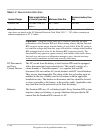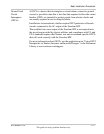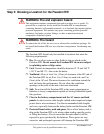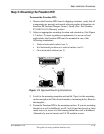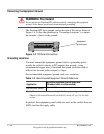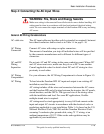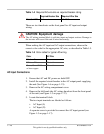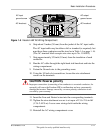
1–10 975-0468-01-01
This guide for use by qualified installers only
DC Disconnects
and Over-
Current Devices
The DC circuit from the battery to the Freedom HW must be equipped
with a disconnect and over-current device. This usually consists of a
circuit breaker, a “fused-disconnect,” or a separate fuse and DC
disconnect. Do not confuse AC circuit breakers with DC circuit breakers.
They are not interchangeable. The rating of the fuse or breaker must be
matched to the size of cables used in accordance with the applicable
installation codes. The breaker or disconnect and fuse should be located
as close as possible to the battery, in the positive cable. Applicable codes
may limit how far the protection can be from the battery.
Batteries The Freedom HW uses 12-volt battery banks. Every Freedom HW system
requires a deep-cycle battery or group of batteries that provide the DC
current that the Freedom HW converts to AC.
Table 1-2
Recommended Cable Sizes
Inverter/Charger
Cable Length: Battery
to Inverter (one way) Minimum Cable Size
Maximum battery Fuse
Size
Freedom HW Less than 5 feet (1.5
meters)
No. 2 AWG 150 Adc
Note: Xantrex recommends not using a cable longer than 5 feet (1.5 meters) in each direction. Cable
sizes above are based on the US National Electrical Code Table 310.17 - 75C cables, assuming an
ambient temperature of 30
°C cables.
Important:
Using the correct cable size is critical to achieving the rated
performance of the Freedom HW unit. When starting a heavy load the Freedom
HW can draw current surges from the battery of up to 400A. If the DC wiring is
too small the voltage drop from this surge will result in a voltage at the Freedom
HW terminals that is too low for the Freedom HW to operate correctly. The
Freedom HW may appear to operate correctly with smaller cables until a heavy
load such as a microwave or refrigerator attempts to start - then the unit may
work correctly sometimes and not work correctly other times.



